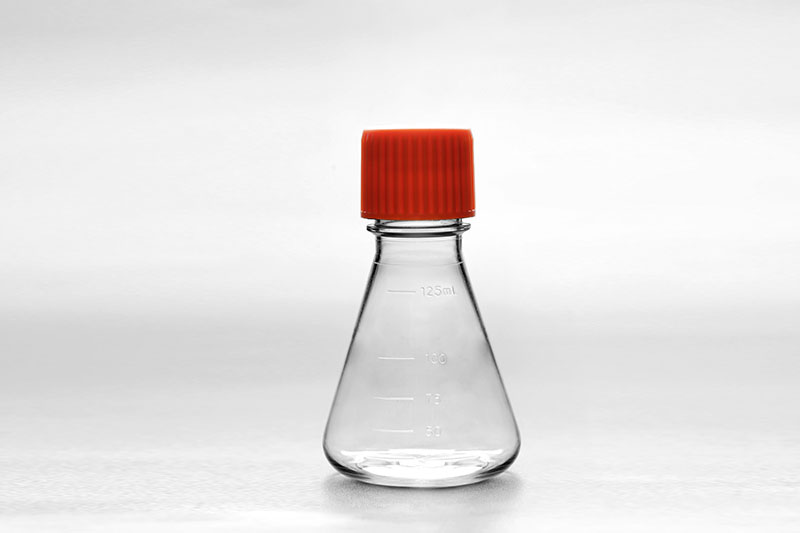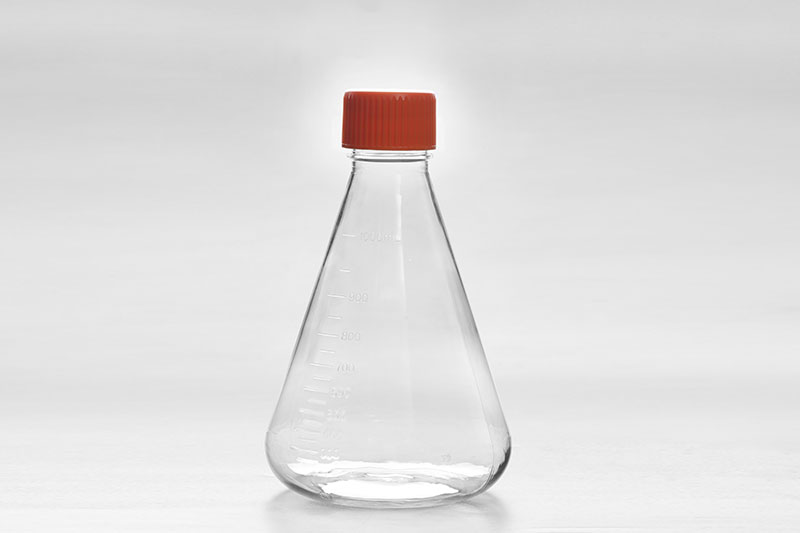Appropriate pH value is a necessary condition for cell growth. When culturing cells in erlenmeyer shake flasks, we sometimes encounter the situation that the pH value of the culture medium changes too quickly, which is very unfavorable for cell growth. So, what causes this, and how can we deal with it?
1. Incorrect carbon dioxide tension: increase or decrease the CO2 concentration in the incubator according to the NaHCO3 concentration in the culture medium. The NaHCO3 concentration of 2.0 g/L to 3.7 g/L corresponds to the CO2 concentration of 5% to 10%. Or switch to a CO2-independent medium.
FuDau 125ml Erlenmeyer Shake Flasks
2. The bottle cap is too tight: Loosen the bottle cap 1/4 turn.
3. Insufficient buffering capacity of NaHCO3 buffer system: add HEPES buffer to a final concentration of 10 to 25 mm
4. The salt concentration in the culture solution is incorrect: use the culture solution based on Earle's salt in the CO2 culture environment, and change the culture solution prepared with Hank's salt in the atmospheric culture environment
5. Bacterial, yeast or fungal contamination: If the culture solution in the cell shaker is contaminated, it will also lead to a change in pH value. At this time, depending on the contamination, choose to discard the culture or sterilize it with antibiotics.
FuDau 1000ml Erlenmeyer Shake Flasks
Most cells are suitable for growth at pH 7.2~7.4, and cells below pH 6.8 or above pH 7.6 are harmful to cells, even degenerate or die. Different cells have different requirements for pH value. Generally, primary culture cells are less tolerant to alkaline pH than acidic, and an acidic environment is more beneficial to cell growth than an alkaline environment. If the pH value in the erlenmeyer shake flasks culture medium changes too quickly, we need to analyze the specific reasons before proceeding to the next step.
The FAI climbed 5.9 percent year-on-year in the first 11 months of 2018, quickening from the 5.7-percent growth in Jan-Oct, the National Bureau of Statistics (NBS) said Friday in an online statement.
The key indicator of investment, dubbed a major growth driver, hit the bottom in August and has since started to rebound steadily.
In the face of emerging economic challenges home and abroad, China has stepped up efforts to stabilize investment, in particular rolling out measures to motivate private investors and channel funds into infrastructure.
Friday's data showed private investment, accounting for more than 60 percent of the total FAI, expanded by a brisk 8.7 percent.
NBS spokesperson Mao Shengyong said funds into weak economic links registered rapid increases as investment in environmental protection and agriculture jumped 42 percent and 12.5 percent respectively, much faster than the average.
In breakdown, investment in high-tech and equipment manufacturing remained vigorous with 16.1-percent and 11.6-percent increases respectively in the first 11 months. Infrastructure investment gained 3.7 percent, staying flat. Investment in property development rose 9.7 percent, also unchanged.
 English
English




















































